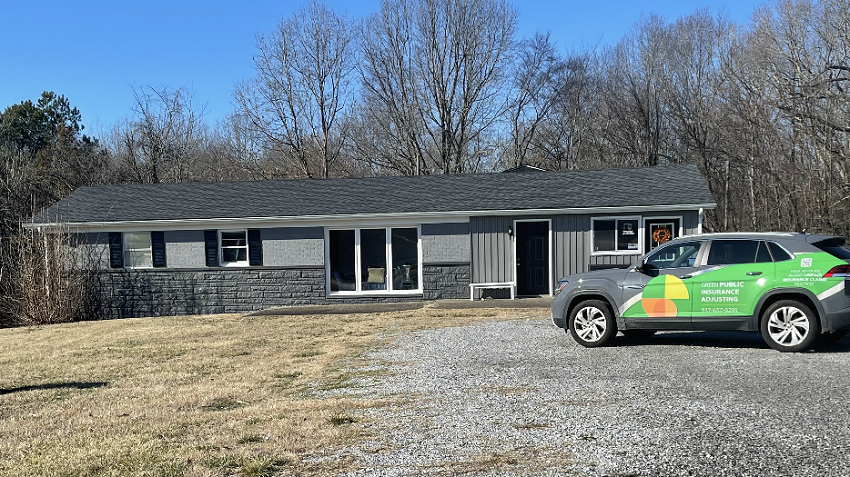Imagine this:
A powerful storm hits your neighborhood on January 1, 2020. Lightning strikes your home, igniting a small roof fire, causing an immediate power outage that spoils everything in your refrigerator, and disabling your sump pump, which leads to a flooded basement.
Days later, the insurance adjuster arrives — and informs you that each of these losses must be filed as a separate claim:
1. One for the roof fire.
2. One for food spoilage from power loss.
3. One for the water damage from sump pump failure.
Three claims. Three deductibles. Three separate headaches.
So, is that correct? Or are all three damages part of one covered loss arising from the same event?
One Cause, One Loss
Most property insurance policies define a “loss” or “occurrence” as a single event that causes damage. The key question is whether all the resulting damage stems from the same originating cause — in this case, the lightning strike.
Under most standard homeowner’s and commercial property policies, one event triggering multiple consequences still counts as one claim, provided the chain of causation is direct and uninterrupted.
This principle is sometimes called the “efficient proximate cause” doctrine — meaning that if one peril (like lightning) leads to other losses (like fire, spoilage, and flooding), all resulting damage can be considered part of the same covered event.
Splitting those losses into multiple claims can have serious consequences for a policyholder:
- You may have to pay multiple deductibles.
- It could distort your loss history, impacting future premiums.
- It can delay or reduce the total amount paid under the policy.
When Adjusters Split Claims Improperly
Unfortunately, policyholders often encounter adjusters who unilaterally determine that multiple claims must be filed for what appears to be a single, connected event.
Sometimes this happens because of misinterpretation of the policy language. Other times, it’s the result of internal claims handling procedures that favor the carrier’s administrative convenience over the insured’s best interest.
Whatever the reason, the adjuster’s conclusion is not the final word. The insurance policy is a contract, and its definitions — not the adjuster’s opinion — control how losses are categorized.
What Policyholders Can Do
If you’re told that your damages must be filed as separate claims, take these steps:
1. Document the Causal Chain
Record in writing (and with photos) how all damages stem from the same event. For example, “Lightning strike caused roof fire, power loss, and sump pump failure.”
2. Submit One Claim Package
Include all damages in a single Proof of Loss and reference the originating event. If the adjuster insists on separation, respond in writing and reserve your rights.
3. Request Written Justification
Ask the insurer to identify the policy language that requires separate filings. In many cases, they can’t — because no such clause exists.
4. Engage a Licensed Public Adjuster
Public adjusters understand how to interpret policy definitions and push back on improper handling. They can escalate the issue to management when the front-line adjuster is unresponsive.
5. File a Complaint with the Ohio Department of Insurance (ODI)
In Ohio, insurers are bound by Administrative Code Rule 3901-1-54, which prohibits unfair claim practices and requires prompt, good-faith investigations. You can submit a complaint through the ODI Complaint Center if the insurer refuses to act fairly:
👉 https://insurance.ohio.gov/about-us/complaint-center
6. Consider Legal Action for Bad Faith
If the insurer’s conduct is misleading, arbitrary, or retaliatory, the policyholder may have grounds for a bad faith claim under Ohio law. Courts have held that carriers owe insureds a duty of good faith and fair dealing — a standard that extends to claim handling decisions.
The Role of Policy Language
Every claim ultimately turns on the policy language. Terms like occurrence, event, and loss are often defined within the policy itself. In most cases, one lightning strike is one occurrence — no matter how many types of damage result.
However, insurers may cite exclusions or sub-limits (for example, food spoilage or sump pump overflow) to justify splitting or denying portions of a claim. That’s why having your policy reviewed by a public adjuster or attorney familiar with Ohio insurance law can make a critical difference in preserving coverage.
How Ohio Law Protects Policyholders
Ohio’s regulations require insurers to:
- Acknowledge and respond to claim communications within 15 days.
- Begin investigating within 21 days of notification.
- Refrain from misrepresenting pertinent policy provisions.
- Provide reasonable explanations for claim denials or handling decisions.
If an insurer directs an adjuster to separate a single event into multiple claims without justification, it could be viewed as an unfair claims practice under Ohio Administrative Code 3901-1-54.
Policyholders have the right to challenge those actions — and to seek help from professionals who understand both the technical and legal sides of claim management.
Final Thoughts
In the example above, the lightning strike is a single, identifiable cause of multiple resulting damages. That means the losses are most appropriately handled as one claim — not three.
When adjusters attempt to divide one loss into several claims, policyholders are within their rights to challenge that determination, demand clarification in writing, and escalate the issue through proper channels.
The insurance company’s duty is to investigate fairly, apply the policy as written, and act in good faith. Anything less is not just poor service — it may be a regulatory violation.
Disclaimer
This article is for informational purposes only and reflects the professional perspective of licensed public adjusters. Green Public Insurance Adjusting and its employees are not attorneys and do not represent any law firm. Policyholders should consult qualified legal counsel for advice on coverage disputes or bad faith claims.





